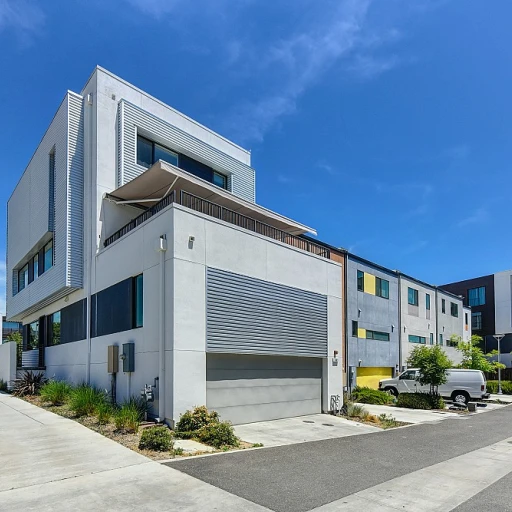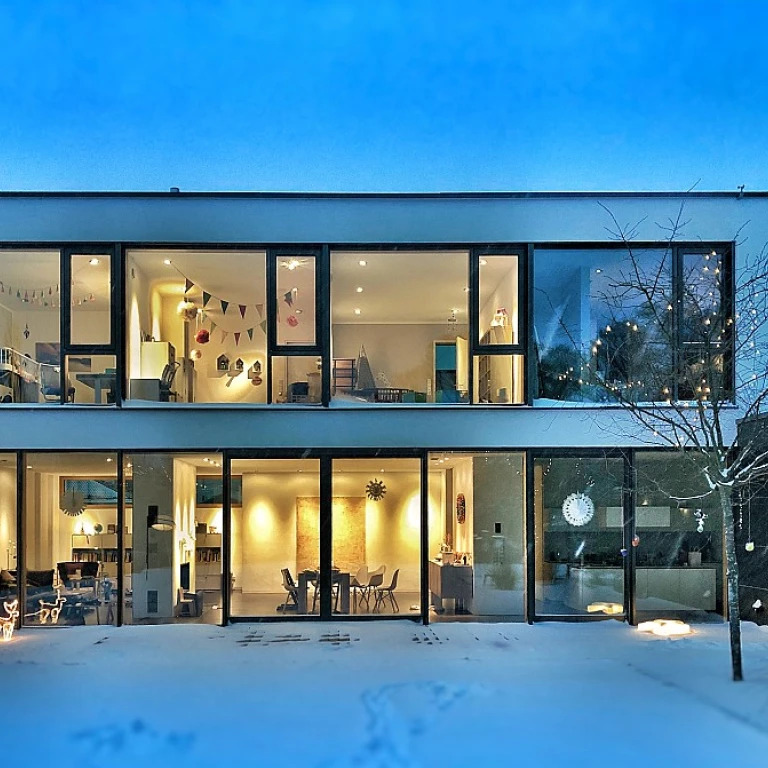Architectural Grandeur
Imposing and Intricate Design
Medieval townhouses exude an unparalleled grandeur that draws admiration from architecture enthusiasts and casual observers alike. These structures, often more akin to small castles than simple dwellings, have stood the test of time with their robust stone walls and towering facades. Generally, their architectural design comprises a blend of functional and decorative elements, reflecting the tastes and wealth of the noble classes during the middle ages.
The clever use of space is a hallmark of these town residences. Unlike the spacious expanses of sprawling country manors, medieval townhouses had to fit into compact urban plots. Noble families therefore prioritized verticality, adding multiple stories that allowed for both living quarters and work areas in a confined footprint. The intricacies of these structures offer insight into medieval life, showcasing how lords and peasants interacted within the feudal system, balancing between grandeur and practicality.
Internally, these homes were generally designed with communal rooms and private chambers, each adorned with architectural flourishes that demonstrated the social class and prestige of the inhabitants. From intricately carved wooden beams to formidable fireplaces, every feature served both aesthetic and functional purposes. Notably, the use of materials like wattle and daub provided warmth and insulation, essential for surviving cold winter seasons.
The enduring allure of these townhouses in today’s real estate market can be compared to the enchanting historic appeal found in properties such as
Spanish castles for sale. Indeed, the architectural grandeur of these residences offers insight into the lavish lifestyle and prestigious status of their original noble occupants, forming the backdrop for life in the city during the early medieval ages.
Historical Significance
Legacy of the Ages: Exploring Medieval Origins
The historical significance of noble medieval townhouses is a captivating element that draws many enthusiasts towards these architectural marvels. These structures date back to the heart of the Middle Ages, a period characterized by a complex blend of social, cultural, and economic transformations. During this time, townhouses were a symbol of rising urbanization and the evolution of housing as a depiction of social status.
In an era when peasants generally worked the land under the feudal system, these noble houses represented a different tier of life medieval. Unlike the rough homes of wattle daub that sheltered the common man, townhouses were often robustly built, serving both as urban palaces and strongholds in the bustling city. With walls that narrated stories of the house medieval period, these structures stood as silent witnesses to the noble family’s legacy and dominion.
Standing amidst the urban sprawl, these residences were not merely houses; they were symbols of wealth, influence, and power. Often owned by a lord manor or other high-ranking social class figures, these residences allowed the wealthy families to assert their standing in the rapidly growing urban centers. The presence of these living spaces in the town offered a haven from possible political turmoil and the uncertainties of daily life during those tumultuous times.
As we gaze upon these ancient edifices today, they remind us of their significant role in the social dynamics of medieval society, bridging the gap between the majestic castles of the countryside and the bustling streets of the town. The noble and wealthy populations of the time had a marked impact on the development of the cities, shaping them into what we now recognize as the hubs of civilization.
For more insights into the evolution of grand residences through different eras, explore how modern adaptations have transformed luxurious mansions.
Here’s an interesting exploration of these transformations.
Modern Adaptations
Adapting Nobility for Modern Living
The timeless appeal of medieval townhouses lies not just in their architecture and history but also in their ability to be adapted for modern use. Historically, these residences housed the noble classes, standing proudly amid the urban sprawl of cities. Today, their stone walls and intricate wooden structures hold a new kind of allure for modern homeowners looking to blend historical essence with contemporary needs.
Modern adaptations of these noble houses have seen a harmonious merging of old-world charm with new-world convenience. While maintaining the traditional wattle and daub techniques and the grandeur reminiscent of a castle, they are often updated with state-of-the-art amenities and sustainable technologies. These revered spaces once acted as town residences for wealthy families and are now sought after by those desiring both style and comfort in historical housing.
Given the constrained spaces of urban areas, many medieval townhouses have reconfigured their layouts. Flexible living areas are integrated to accommodate the needs of modern daily life without disrupting their historical integrity. Strategically placed glass and use of natural light bring warmth to spaces that were previously dark, enhancing the sense of living in a castle or a palace.
The social class distinctions that defined the function of rooms in the Middle Ages can now be reimagined to suit open-plan lifestyles. From providing spaces for work and entertainment to being homes where families can grow, these residences continue to evolve while still retaining their noble character. This seamless blend of the ages makes them not just a past relic but a continued statement of prestige and sophistication.
To further explore how historical architecture adapts to modern requirements, consider reading about the
allure of One Charles in Boston.
Investment Potential
Pursuing Value in the Nobility of Medieval Housing
Investing in noble medieval townhouses is not merely a matter of acquiring unique architectural splendors. These residences carry an intrinsic value that transcends the traditional housing market. The allure draws from the ability to own a segment of societal history, where the stately charm of noble houses from the middle ages combines with modern luxury.
The urban landscapes in which these townhouses are generally situated often burgeoned during the heights of the feudal system. As middle and wealthy families sought residence within city walls for safety and prestige, owning a noble townhouse quickly became a semblance of social class and influence. Thus, acquiring such a residence today offers investors more than just property; it provides an investment in the legacy of noble wealth.
Contemporary adaptations of these homes capture the essence of their original grandeur while introducing modern amenities. This intersection of historical elegance and modern conveniences significantly elevates the residence's market value. It appeals not only to those nostalgic for the ages of old but also to discerning buyers in search of unique, luxurious lifestyles.
Moreover, the scarcity of these properties only enhances their attractiveness. With preservation challenges deterring modern recreations, existing medieval townhouses offer singular prospects. The rare availability ensures a persistent demand from those eager to identify with the nobility of past eras.
Thus, for those keen to delve into the nobility of early medieval life whilst securing their place in present society, investing in these town residences offers a harmonious blend of historical significance, architectural magnificence, and financial potential.
Preservation Challenges
Ensuring Longevity and Integrity Amidst Evolving Times
Preserving the authentic essence of medieval townhouses presents a unique set of challenges. As these structures stand as remnants of the past, maintaining their architectural beauty while ensuring they meet modern standards is a delicate balancing act. These townhouses, with their age-old construction methods such as wattle and daub, require specialized knowledge for effective restoration.
The preservation process is not merely an architectural endeavor but a commitment to safeguarding our historical heritage. It demands significant resources and expertise to maintain the integrity of elements like stonework and wood carvings that date back to early medieval times.
- Historical Restoration: Reviving these noble houses necessitates adhering to the architectural standards of the era. Employing materials similar to those used by craftsmen of the past is essential to integrate new repairs seamlessly with the old.
- Regulatory Compliance: Owners often find themselves navigating complex local and national preservation laws. Such regulations are designed to ensure that modifications do not compromise the historical value of these homes. Thus, any renovation project must be meticulously planned and executed.
- Financial Considerations: The financial aspect cannot be overlooked, as restoring a house from centuries ago is a significant investment. Wealthy families who invest in these historic residences do so knowing that the cost of preservation is steep but rewarding in terms of both cultural value and prestige.
While these challenges might seem daunting, they only add to the allure of owning a piece of history. Despite the intricacies of preservation, these townhouses continue to captivate, offering a glimpse into the life of the noble class and the rich tapestry of communal daily life in a medieval town.
Lifestyle and Prestige
The Aristocratic Lifestyle of Medieval Townhouses
The allure of residing in a noble medieval townhouse extends beyond architectural grandeur and historical significance. The lifestyle and prestige associated with such residences are intimately tied to their place within the social framework of the middle ages. These townhouses, nestled within bustling urban centers, were not just homes; they were a testament to the residents' social class and power.
Living in a medieval townhouse was significantly different from the life experienced by peasants in rural areas, who generally worked the land as part of the feudal system. Instead, these townhouses offered a sanctuary for noble and wealthy families, where the hustle of daily life centered around both family affairs and social responsibilities. The houses were often designed to reflect the status of their inhabitants, reminiscent of a smaller-scale castle or lord's manor, a stark contrast to the manor houses enveloped by the countryside.
These urban residences provided an unparalleled level of comfort and convenience for their time. Built within city confines, they allowed easy access to the vibrant and dynamic life medieval towns had to offer. This proximity to the center of old cities offered not only safety in numbers but also a vibrant array of marketplaces, events, and opportunities for engagement with other influential members of society. Life in these houses was steeped in a rhythm that combined personal privilege with a visible demonstration of wealth.
Moreover, the prestige of owning a house in a bustling medieval town further bolstered the noble identity of its residents. Today, investors and history enthusiasts revel in the rich stories these homes tell, as they are timeless reminders of an era when architecture and societal stature were inextricably linked. While medieval townhouses have evolved over centuries, their ability to offer a window into the aristocratic life of ages past remains undiminished.

